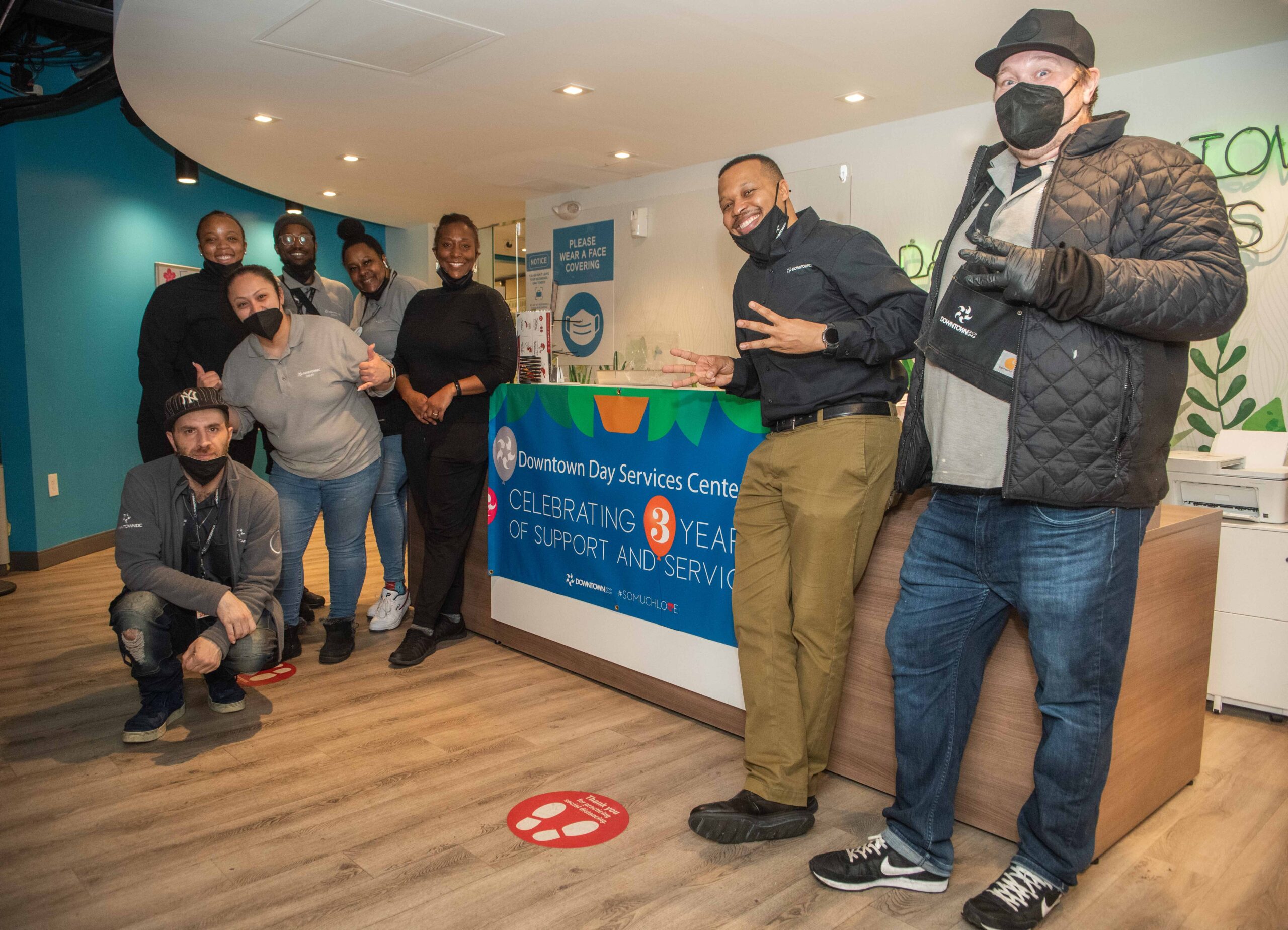Business leaders all over the country are helping to reduce — and end — homelessness in their communities.
Homelessness is a human tragedy, a social disaster, and an economic problem, too. In terms of lives and community resources, it is a problem that is more costly to ignore than to solve. As both citizens and economic players, business leaders have a stake in ending homelessness. And they are stepping up.
Because homelessness is complex, however, it can be difficult to know where to start. Here are some ways business leaders can help their communities reduce and end homelessness.
Questions to ask
● How can we work with other community partners to advance a commitment to equitably reducing and ending homelessness?
● What expertise, support, and resources do we have to contribute to these aims, both as individual businesses and collectively?
● What will it cost, and where will the money come from, to reduce and then end homelessness?
● How can we help create reliable, real-time data?
Actions to take
1. Support systemic change.
Business leaders, chambers of commerce, and business improvement districts are playing a key role by endorsing changes at the systems level in the efforts to end homelessness. In some Built for Zero communities, business improvement districts and business communities have mobilized to organize for systems change and created pressure and provided funding for the policies, practices, and support needed to move the community toward its shared aim. Charitable arms of businesses and philanthropic organizations can also leverage untapped resources and provide financial support for upstream solutions, addressing factors that can prevent people from becoming homeless in the first place.

CASE STUDY
In May 2021, the Grand Rapids Area Chamber of Commerce led the effort to join Built for Zero, and the business community is directly involved in supporting effective action.
2. Champion the collection and use of quality data.
People in business are familiar with the idea that “what gets measured gets managed.” The same is true of homelessness. Indeed, because it is generally not managed well, it is mismanaged.
Before homelessness can be solved, it’s necessary to know who is experiencing homelessness. That requires compiling the names and circumstances of every individual experiencing homelessness. This by-name list should be updated at least monthly. Once a community has established reliable data, it can systematically address the needs of each individual. At the same time, it is important to track the changing size, composition, and dynamics of the homeless population.
THE IMPORTANCE OF DATA
With accurate data, no one experiencing homelessness is overlooked for help, and communities can see if they’re making real progress — as a growing number of communities have proved. Accurate data is also key to identifying and correcting racial disparities in your community’s response to homelessness.
3. Understand your community’s specific goals.
Built for Zero communities focus on establishing a shared aim, called functional zero, to create accountability for reducing and ending homelessness for different populations such as veterans or youth. Business leaders can support efforts to achieve and sustain functional zero, making homelessness rare, brief, and non-recurring in their communities.
Learn about the strategies your homeless response system has in place to reduce and end homelessness. For example, during the Covid-19 pandemic, the City of Grand Rapids created a homeless outreach team to develop and spread messaging to people experiencing homelessness about how to best safeguard against Covid-19. Composed of firefighters, police officers, and social workers from one of the area’s largest mental health agencies, this outreach team also began to develop relationships with local businesses and share the city’s strategies for reducing homelessness, including their Housing First philosophy.
Read more about business leaders working to end homelessness
Homelessness is solvable.
Communities in the Built for Zero movement are proving it.


